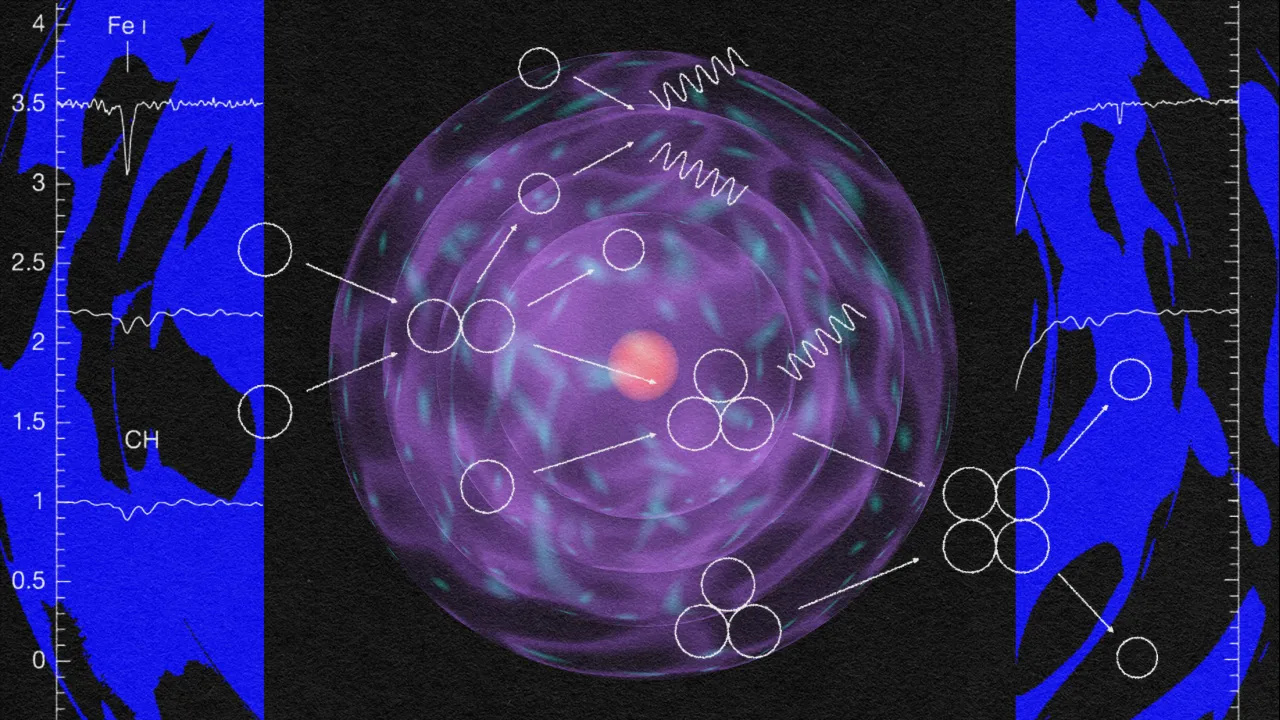"Today, the Universe has evolved into the complex, life-friendly place we know it to be because we were able to form neutral atoms early on in the Universe. Yet without just the right quantum properties, the formation of stable, neutral atoms would have been delayed significantly, or might not have even occurred at all." (BigThink, What is the origin of quantum uncertainty?)
"The uncertainty principle, also known as Heisenberg's indeterminacy principle, is a fundamental concept in quantum mechanics. It states that there is a limit to the precision with which certain pairs of physical properties, such as position and momentum, can be simultaneously known. In other words, the more accurately one property is measured, the less accurately the other property can be known." (Wikipedia, Uncertainty principle)
The uncertainty principle means: that if we focus on one quantity. We cannot keep focus with the same accuracy on other quantities. In simpler saying, if we focus on the change in the vertical position, we cannot focus on the horizontal position. If we think that, the space is the box and there is a coordinate system we can demonstrate what the uncertainty principle means. The uncertainty principle works only in the 3D universe. In a 2D coordinate system is possible to determine the point where the particle is and where it goes with high accuracy.
If we want to determine the particle's position in horizontal or X-axle we must look at it from above. That thing makes it impossible to determine the particle's position in a vertical or Y-axle. That is the thing that we must understand when we think about uncertainty.
In some models, spacetime is like a 3D coordinate system. The energy level is the position in the Y-axle. And the X-axle determines the particle's physical position. And the Z -axle is the time, or, arrow of time that travels through the system.
But then we can think that the 3D coordinate system zero point is in the middle of the box. That means that there are also negative coordinates. That thing makes it possible to model space where the time arrow takes the entirety forward. That thing means the spacetime is like the box there is the 3D coordinate system. Up and down and forward and backward are the directions where particles can go.
Then we can imagine a situation in which we are at the same level in the vertical coordinate layer as a particle, which goes away from us or comes straight to us. We cannot see the horizontal movement of that particle. We can see that the particle grows or shrinks when it travels on the same layer at a straight angle to us.
"The expanding Universe, full of galaxies and the complex structure we observe today, arose from a smaller, hotter, denser, more uniform state. Although the extent of the observable Universe, today, takes us out some 46 billion light-years in all directions, in the distant cosmic past, everything in space was much more compact, closer together, and occupied a much smaller volume, begging the question: what drives the expansion of the Universe, both initially, at the start of the hot Big Bang, and today, at late cosmic times, where the expansion is accelerating?" (BigThink, Ask Ethan: Why don’t we feel the Universe’s expansion accelerating?)
So if we want to observe changes in the system, we must be outside the system.
This thing is a good example of how difficult is to notice changes in the system if the observer is in the middle of it. The universe expands all the time, but it's hard to see that expansion. The distance between objects is relative. That means that the objects can turn more distant from each other, but they can seem to be at the same distance. The thing in the universe's expansion is that the universe expands and that makes the quantum fields in it weaker.
And that causes an interesting phenomenon. The particles expand with the universe. When the universe expands. That turns the space around particles larger. The energy level in the universe decreases. Because all known energy and material are in the universe. The expansion causes a decrease in the energy level.
The expansion of the universe makes energy flow from the particles into the space. And there is a theory that dark energy is energy, that comes from still-unknown particle structures. The thing that sends dark energy can be some kind of still unknown structure in particles.
That thing causes interesting visions about dark matter. If dark energy is wave movement, there could be the Schwinger effect. The crossing dark wave movement can create dark matter and anti-dark matter particles, and then those unseen particles' annihilation forms dark energy. The idea is that weakly interacting massive particle WIMP is capable of interacting with other WIMP. And maybe that thing can explain the dark energy the force, that rips the universe in pieces. But that is only one of many hypotheses about the origin of the dark energy.
https://bigthink.com/starts-with-a-bang/origin-quantum-uncertainty/
https://bigthink.com/starts-with-a-bang/why-feel-the-universe-expansion-accelerating/
https://en.wikipedia.org/wiki/Fundamental_interaction
https://en.wikipedia.org/wiki/Uncertainty_principle





No comments:
Post a Comment
Note: Only a member of this blog may post a comment.